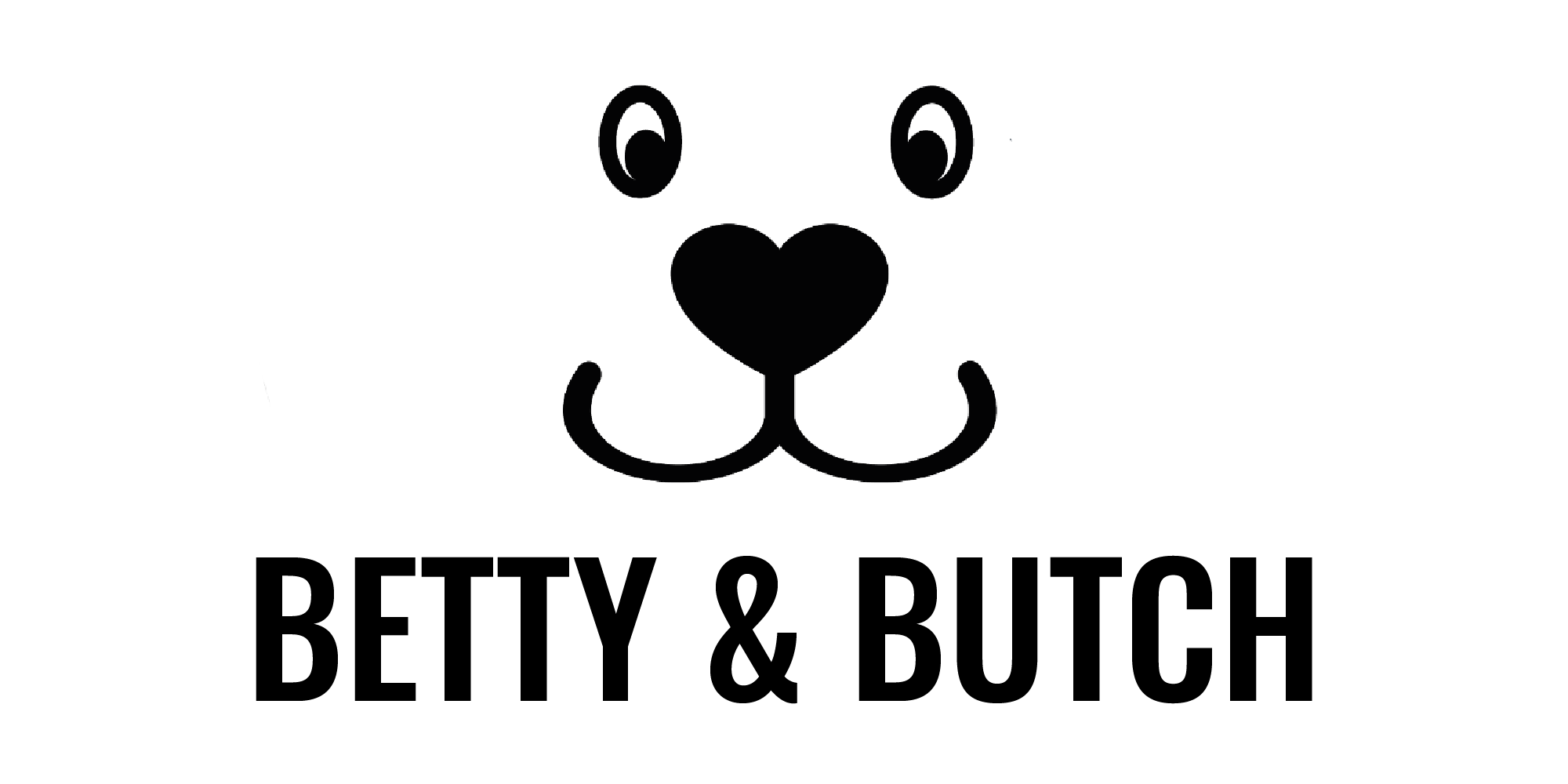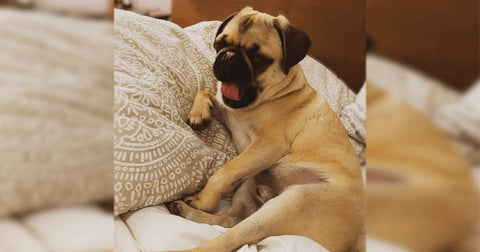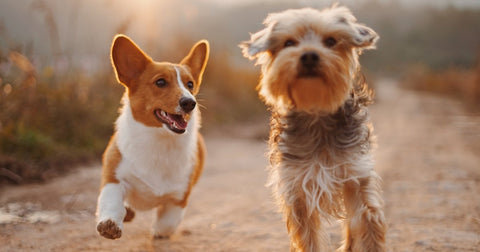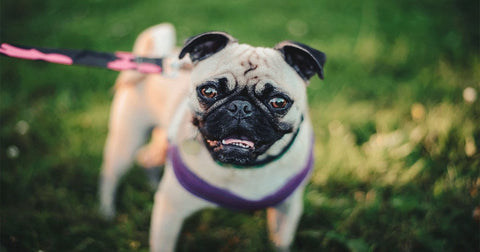A little dog with a big personality, pugs are one of the world’s oldest dogs which can be dated back to as early as 400BC. A distinctive black mask, short-muzzled, wriggly face, pugs are caring companions with a big, affectionate heart and an energetic persona.

With a sturdy, compact build and a curly tail, pugs require a high level of care and attention to help keep them fit and healthy. A very rewarding pet to be part of the family, pugs are known for their even-tempered demeanour, which means they are a great breed for families with children. They are even highly adaptable dogs who are just as happy to live in an apartment as they are in a house.
Size & Colour
The pug has 4 colours which are black, fawn, silver and apricot.

Pugs typically weigh between 14-18 pounds for both male and females and their average height is between 10-14 inches tall.
Males tend to be taller than females but not by much and they are considered one of the smallest dog breeds in terms of width and height.
Like with many small dog breeds, pugs usually reach full maturity earlier than larger breeds and stop growing after one year.
Coat
Pugs have a short, smooth coat with a darker mask face and a darker colouration in the ears. Often described as having a fine, glossy coat, non-black pugs have a double-layered coat which means they have an inner insulating layer and a top coat known as guard hairs that are relatively short but dense.

Black pugs commonly have a single layered coat consisting of just a top layer and while they shed less than other coloured pugs, the pug as a breed is one of the top breeds to shed due to their dense coat that heavily sheds throughout the year.
Even though they are regarded as a heavy shedding breed, pugs are generally thought to have easy care for coats because they don’t get tangled or matted and can be kept clean without a lot of effort.
Grooming
Pugs would benefit from a brush three times a week to minimise shedding and to promote healthy hair growth when old fall out. Brushing is also beneficial for boosting circulation to the skin which enhances a healthy, glossy coat.

During a grooming routine for a pug, extra attention should be placed upon keeping your pug’s folds clean and dry since they are prone to yeast infections. You should carefully wipe down each skin fold with a fragrance-free grooming wipe like our Earth Rated Pet Grooming Wipes which are hypoallergenic and great for sensitive skin, and then dry the area thoroughly.
Whilst most short-haired breeds don’t typically need a bathe too often, pugs on the other hand are the exception. Your pug would benefit from a monthly bath which will help to remove loose and shedding hair. Always use a hypoallergenic, mild in scent shampoo which will smooth and nourish their coat and not strip away their natural oils and irritate the skin making it dry and flaky.
Exercise Requirements
Pugs need between a mild to moderate amount of exercise, generally between 40 to 60 minutes a day of a mixture of both physical and mental stimulation.

Since they are a small breed, they don’t need a large garden to play, however, a 30 minute walk once a day as well as active playing would be recommended to help strengthen their circulatory and respiratory system, keeping them fit and healthy.
Physically demanding exercise or over exercising your pug should be avoided since pugs have a short muzzle which makes it harder for them to breathe and makes them prone to heat exhaustion not only in the summer months but in the winter as well. You shouldn’t take your pug out during the hottest time of the day, rather early in the morning or the evening in the summer months to prevent heatstroke.
Health Issues
A life expectancy for a pug is between 12 to 15 years and due to being brachycephalic dogs (flat-faced), they are unfortunately prone to many health conditions that other breeds are not.

You’d often find a pug makes a lot more noises like wheezing, panting, snorting and snoring that other dogs do due to their elongated soft palates which makes it harder for them to breathe. Common respiratory problems include Stenotic Nares which is a common birth defect that is caused by soft nasal tissues. The tissue easily collapses, resulting in pugs having to breathe through their mouth. They are also prone to the Reverse Sneezing Syndrome which is caused by their elongated palate that obstructs the airway, leading to uncontrollable sneezes, gasps and wheezing.
Making them unique from other breeds, their big adorable eyes can sadly lead to several eye health issues like Cherry Eye which is an inflamed or infected tear duct, Corneal Ulcers which is when a damaged area of cornea creates an ulcer that can lead to infection, eye trauma or other illnesses and others including Cataracts, Dry Eye and Distichiasis.
As previously stated, pugs can also have skin infections due to the folds and wrinkles in their skin, which is why extra care should be taken to clean and dry these areas and regularly inspections should take place to check for any discharge, redness or foul odour.
Would You Suit The Pug Breed?
While they don’t need a lot of exercise compared to other breeds, pugs still need a lot of attention because they are social butterflies. They are highly intelligent, lovable, social pups who adapt well to family life, however, as a breed who thrives being around people, they don’t do well with being left alone for long periods of time.
They can often experience separation anxiety and develop destructive behaviours as a way of dealing with being left alone. So if your work schedule means you will be out for most hours of the day, pugs are not the dog for you.

You should take into account the many health conditions that pugs are more susceptible to having due to their short muzzle and remember not to over exercise your pug especially in the summer months. But providing you have lots of time to spare, pugs would be a great companion to your life. They really are a cheerful, unique breed with a big heart.
Enjoy learning about the pug breed? Check out our previous blog on the Labrador Retriever, did you know they have webbed feet which is why the enjoy swimming?




Comments (0)
There are no comments for this article. Be the first one to leave a message!